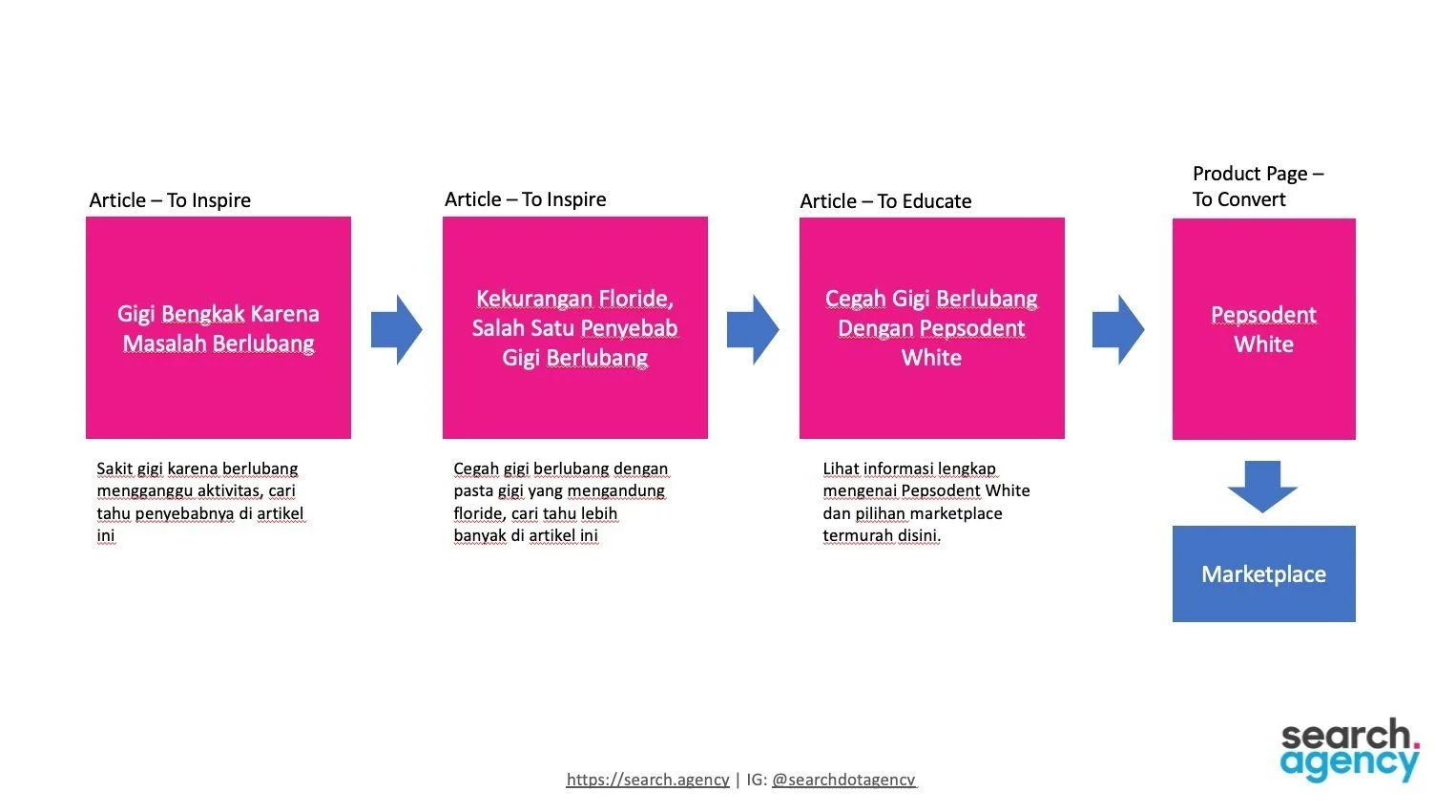From Pain to Purchase: Turning Cavity Searches into Connected Content Paths
Search boxes capture fear, hope, and curiosity in real-time. Each query we type during a toothache tells a small part of a larger story. When brands interpret that story correctly, they can craft content clusters that guide readers from panic to purchase, one calm step at a time. The brand becomes a trusted companion, providing reliable information and solutions.
Pain Signals
Someone tapping “bengkak gigi berlubang” at dawn feels a throbbing cheek and wants relief without delay. The need is raw and urgent.
A page that delivers clear first-aid advice, explains why swelling occurs, and indicates when a dentist visit becomes necessary offers instant comfort. The tone stays empathetic; no product pitch belongs here. Calm the visitor first, and win the first layer of trust, providing the relief and comfort they seek.
A simple follow-up link—perhaps to an infographic on safe home compresses—keeps the reader engaged while pain eases.
Early Curiosity
When the swelling subsides, fear gives way to curiosity. Queries like “awal gigi berlubang” reveal someone inquiring about the origin of this dental issue.
Now is the moment to explain cavity formation, the benefits of fluoride, dietary choices, and the importance of daily flossing. Practical steps, written in plain language, replace panic with a sense of control, empowering the reader.
Each small tip deepens confidence in the brand’s expertise while the commercial message stays politely in the background.
Seeking a Fix
Next comes “atasi gigi berlubang.” The visitor is no longer collecting facts; a remedy feels necessary.
Product-focused advice finally makes sense. Introduce a high-fluoride toothpaste, an antibacterial rinse, or an appointment scheduler as genuine options, then link to a product page.
Keep the suggestion gentle. A friendly nudge converts better than a hard shove, respecting the reader's decision-making process.
Branching Intent
Searches such as “obat sakit gigi berlubang di apotek,” “cara mengobati gigi berlubang secara alami,” and “gigi berlubang tapi tidak sakit” sit on the same path but at different points.
Each phrase is accompanied by a corresponding article, along with a matching next step, such as a printable checklist, a herbal-based rinse recipe, or a symptom tracker.
When the page's purpose and call-to-action align with the exact question, readers progress smoothly, and bounce rates decrease.
Building the Path with Topic Ownership
At Search Agency, we weave these articles into one seamless path we call Topic Ownership. This concept ensures that the reader's journey is well-guided, from pain relief to prevention, then to solution, and finally to conversion. It's a strategic approach that keeps the reader engaged and informed.
Internal links serve as signposts, pointing visitors to the next helpful stop. Calls-to-action shift tone along the way, from “Learn more” to “Buy now,” mirroring the reader’s changing intent.
The entire structure feels like a two-way conversation. The brand guides rather than pushes, earning small commitments that add up to trust. This approach fosters a sense of community and understanding, making the reader feel valued and heard.
Why the Steps Matter
Search engines reward pages that clearly satisfy user intent. When visitors stay, click deeper, and return later, rankings climb.
Readers repay the brand that guided them during a painful night. Trust forged at three in the morning often turns into loyal sales months later.
Miss a step and the chain breaks; cover them all and the brand owns the topic.
Ready to move from scattered articles to a connected path that earns clicks and loyalty? Reach out to Search Agency and let’s craft a content plan that guides readers from their first pang of pain to a confident purchase.
